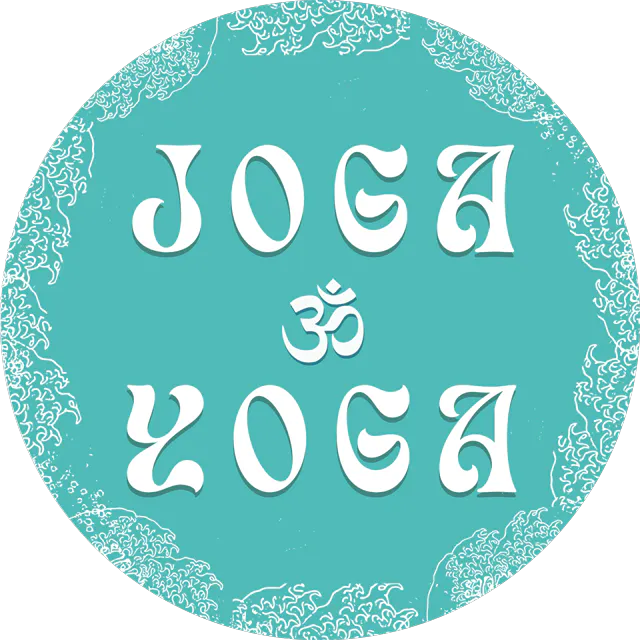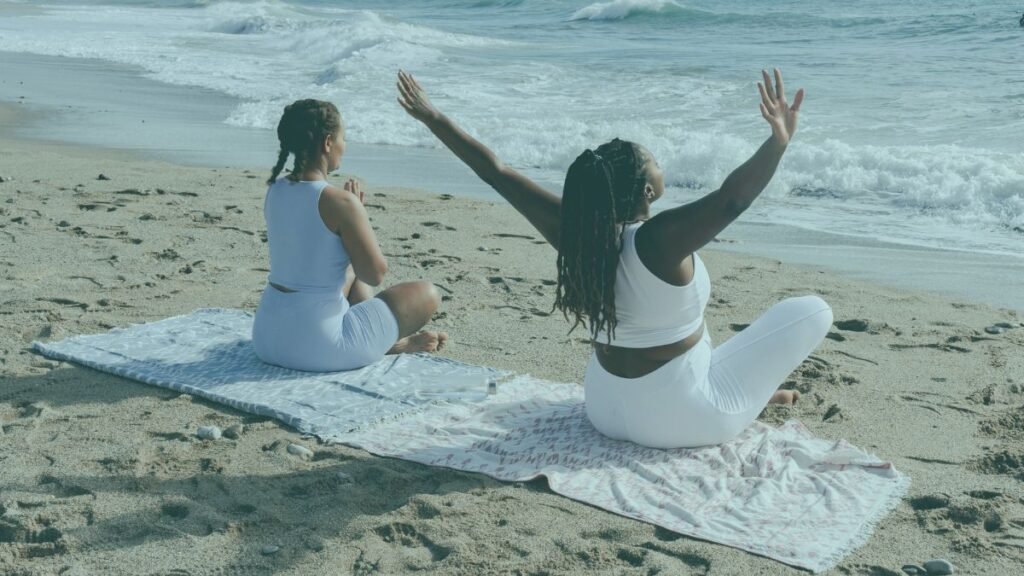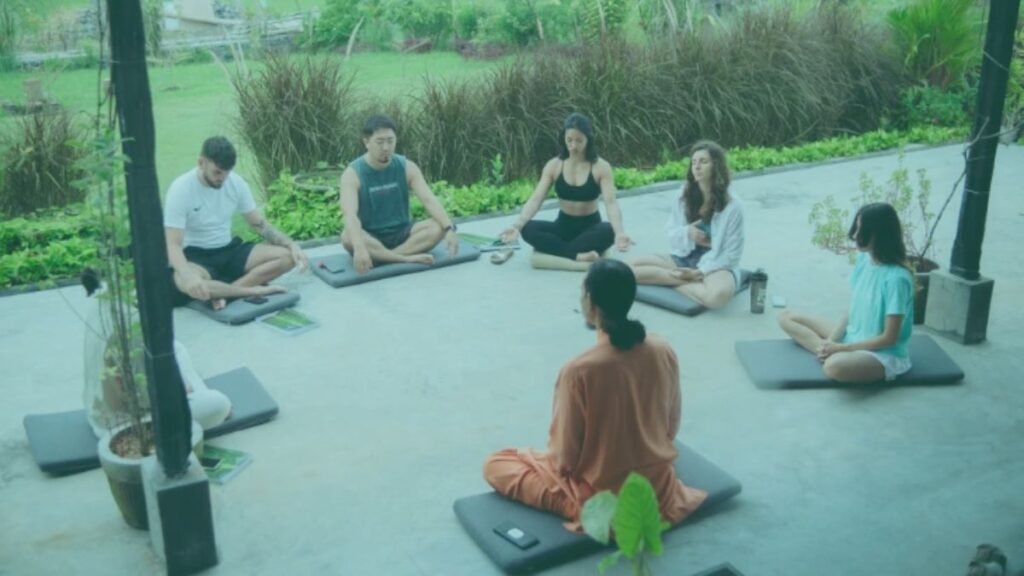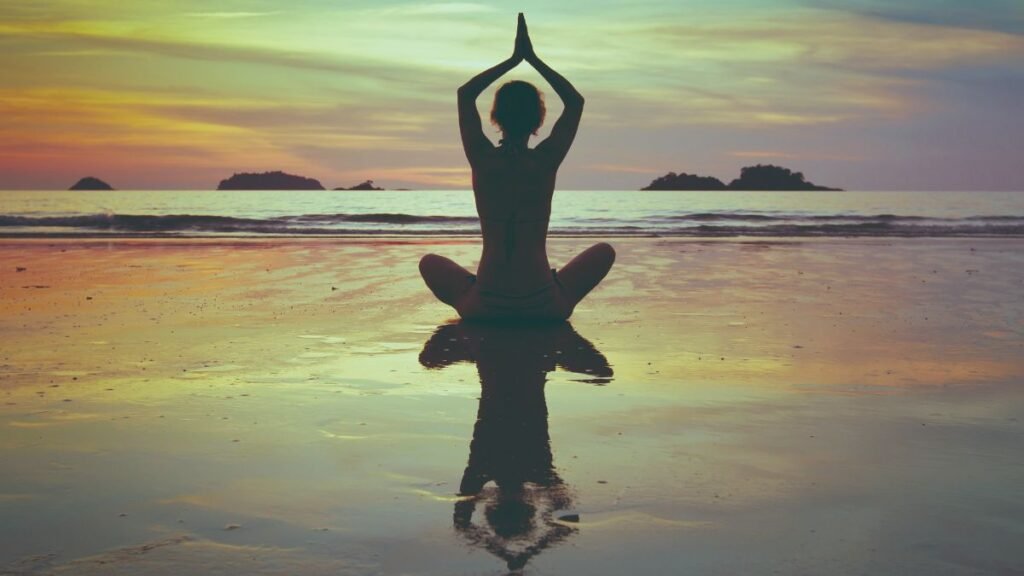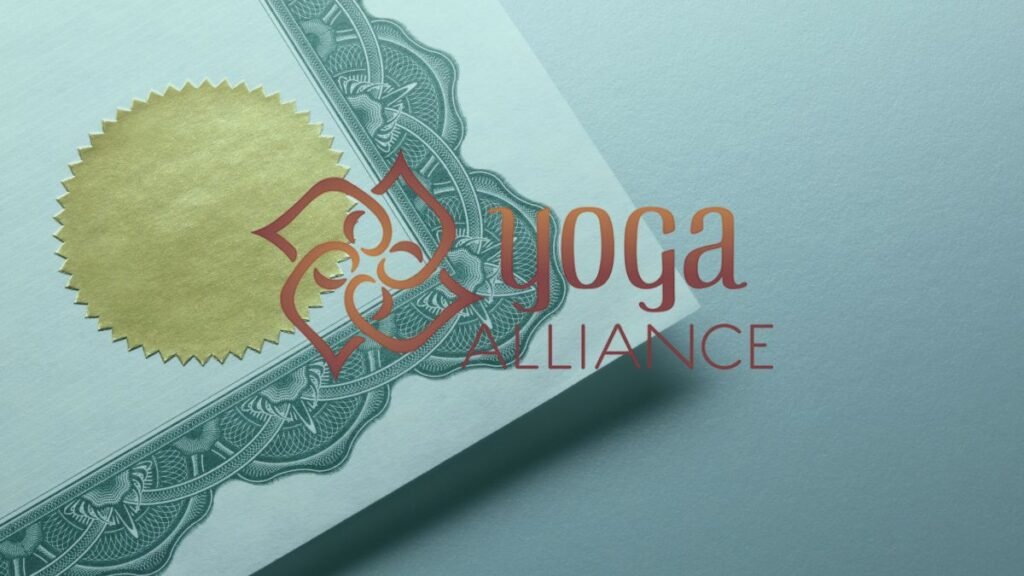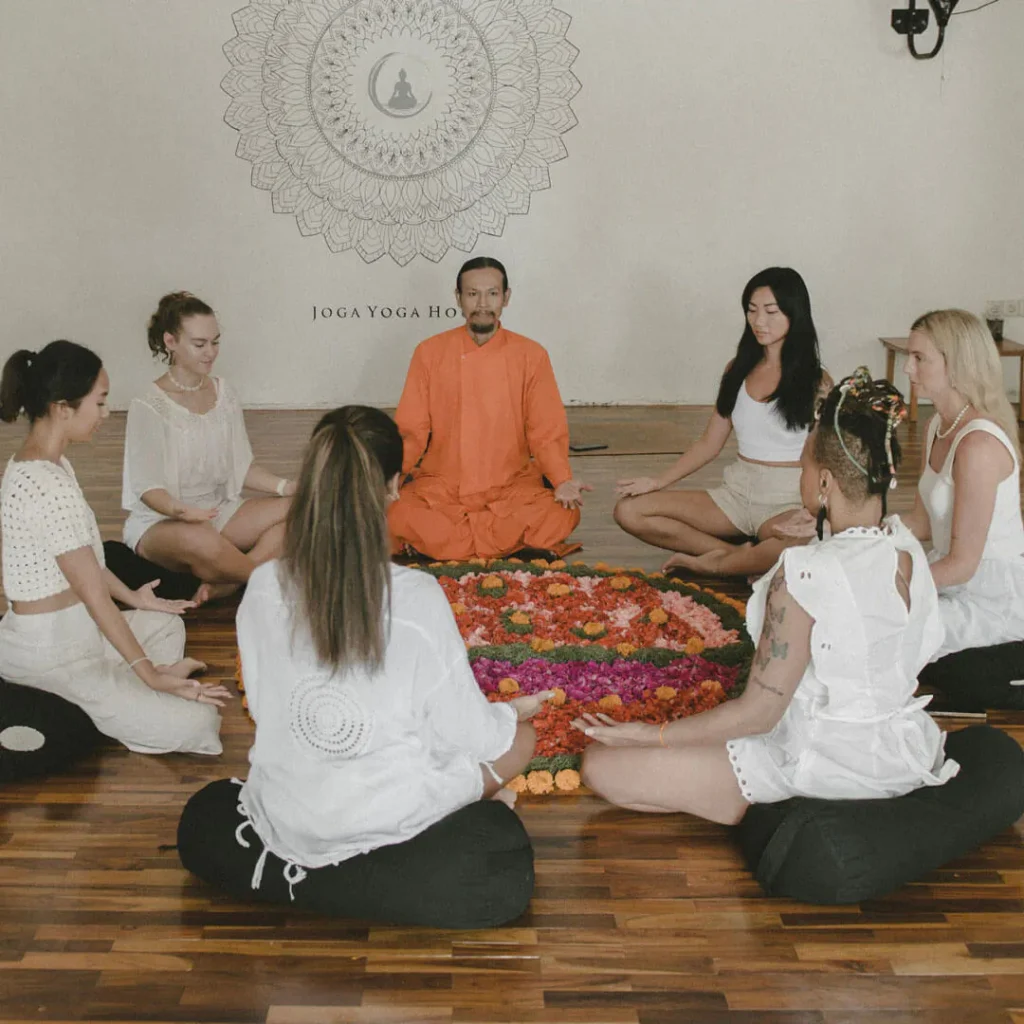Becoming a yoga teacher is an exciting journey. But one question almost every new yoga student asks is, “Do I need a Yoga Alliance certification?”
In 2025, the answer depends on your goals. Some teachers join Yoga Alliance to build credibility and find jobs easily. Others grow their own yoga brand online without joining at all.
This guide will help you understand what Yoga Alliance certification means, if it is worth it, and how to get certified the right way.
TL;DR: Is Yoga Alliance certification worth it in 2025?
Here is a quick guide to help you decide based on your goals:
- You want to teach in yoga studios: Yes. Most studios prefer or require Yoga Alliance certification (RYT 200 or higher).
- You want to teach online or build a personal brand: Optional. It can help you look more professional, but your teaching skills and content matter more.
- You want to specialize in areas like yoga therapy or prenatal yoga: It depends. Some advanced programs go beyond Yoga Alliance and offer deeper, medical-based training.
- You want to work in hotels, gyms, or retreats overseas: Yes. Yoga Alliance is recognized internationally and helps you stand out to employers.
So, is it worth it? If you want structure, credibility, and more opportunities to teach, Yoga Alliance certification is a smart investment.
What is Yoga Alliance and what does “Yoga Alliance certified” really mean?
Yoga Alliance is a nonprofit organization that sets standards for yoga teacher training programs. It was founded in 1999 to make sure yoga schools provide quality education and safe training.
When a school meets Yoga Alliance standards, it becomes a Registered Yoga School (RYS).
When you finish your training at one of these schools, you can apply to become a Registered Yoga Teacher (RYT) through Yoga Alliance.
Here is what Yoga Alliance offers:
- A system that ensures your yoga school meets global standards
- A certificate that proves you completed a recognized program
- A teacher directory where students and studios can find you
- Access to continuing education and teaching resources
Many students think “Yoga Alliance certified” means you are approved to teach anywhere in the world. That is not exactly true. Yoga Alliance is not a government license. It is a registry that shows you trained at a school that meets their standards.

Is Yoga Alliance certification legit and recognized globally?
Yes, Yoga Alliance is recognized in most parts of the world. Studios, gyms, and retreats in North America, Europe, Asia, and Australia often prefer hiring teachers who are Yoga Alliance registered.
The certification shows that you have completed professional training and understand how to teach yoga safely. It also helps with insurance coverage, which many yoga studios require.
However, not every country follows Yoga Alliance rules. Some places have their own yoga boards or laws for teacher registration. For example, Yoga Australia or IAYT (International Association of Yoga Therapists) may be more relevant if you plan to work in yoga therapy or in Australia.
So while Yoga Alliance is respected globally, it is not the only valid certification. Your experience, teaching style, and knowledge still matter most.
RYT vs YTT: What Is the Difference?
Many new yoga students get confused by the terms RYT and YTT, but they are not the same thing.
- YTT stands for Yoga Teacher Training. It is the actual training course you take to learn yoga poses, anatomy, teaching skills, and philosophy.
- RYT stands for Registered Yoga Teacher. You earn this title after finishing your training and registering with Yoga Alliance.
So, you first complete your YTT at a Registered Yoga School (RYS), and then you can apply to become an RYT through Yoga Alliance.
Common mix-ups and how to explain your credential:
- If you finished your training but did not register with Yoga Alliance yet, you are YTT-trained, not RYT-certified.
- Once you register officially, you can call yourself a RYT 200 or RYT 500, depending on your training hours.
- When talking to studios or students, say:
“I completed a 200-hour Yoga Alliance-approved training and am a Registered Yoga Teacher (RYT 200).”
That makes your experience and qualification clear and professional.
Which Yoga Certificate Is Best for Me in 2025?
Choosing the right certification depends on your goals, time, and what kind of yoga teacher you want to become.
RYT 200 – The First Step
This is the most common and beginner-friendly certification.
You learn yoga basics, postures, breathing, and how to teach a class safely.
Perfect for:
- New teachers who want to start teaching in studios
- Students who want to deepen their personal practice
RYT 300 – Advanced Growth
After completing your 200-hour training, you can add another 300 hours to reach 500 total hours.
This training goes deeper into anatomy, philosophy, sequencing, and specialized topics like trauma-informed yoga or meditation.Perfect for:
- Teachers who want to expand their skills
- Those planning to lead workshops or retreats
RYT 500 – The Full Package
This is the combination of your 200-hour and 300-hour trainings. It is the highest standard within Yoga Alliance.
Perfect for:
- Teachers who want to train others
- Studio owners or experienced instructors
Specialty Certifications
If you want to focus on a specific type of yoga, there are add-on programs like:
- Prenatal Yoga
- Kids Yoga
- Therapeutic or Yin Yoga
- Meditation or Yoga Nidra
Each path has value, but your goals decide the best route. For example:
- Studio teaching: RYT 200 or higher
- Retreats or advanced workshops: RYT 500
- Online or niche teaching (kids, prenatal, therapy): Specialty certification
How Do You Get a Yoga Alliance Certificate Step by Step?
Getting certified with Yoga Alliance is simple once you know the process.
1. Choose a Registered Yoga School (RYS)
Pick a school that is approved by Yoga Alliance. Look for programs that clearly say RYS 200, RYS 300, or RYS 500.
Before enrolling, check:
- If the school lists its RYS number on the Yoga Alliance website
- Reviews from past students
- The quality of teachers and curriculum
2. Complete Your Training and Assessments
Finish all required hours, assignments, and practice teaching sessions.
You must attend the full training to qualify for your certificate.
3. Create a Yoga Alliance Account
Go to the Yoga Alliance website and create your teacher profile.
Upload your certificate from your school, fill out your training details, and pay the registration fee.
4. Wait for School Approval
Your yoga school will verify your hours and mark your training as complete.
Once approved, you will officially become a Registered Yoga Teacher (RYT).
5. Maintain Your Registration
Yoga Alliance requires you to keep your certification active by completing Continuing Education (CE) every three years.
You can do this by joining workshops, online courses, or specialized yoga programs.
How Long Does Yoga Alliance Registration Take After You Graduate?
After you finish your Yoga Teacher Training, registering with Yoga Alliance usually takes about one to two weeks. The process is not hard, but timing can depend on how quickly your school and Yoga Alliance review your information.
Typical Timelines
- Create your Yoga Alliance account: 10–15 minutes
- Upload your certificate and details: same day
- School approval: usually 3–7 business days
- Final confirmation and listing: within a few more days after approval
What Can Delay Approval
- Your school has not marked your training as complete yet
- You uploaded the wrong certificate or forgot some details
- Payment issues or missing documents
Tips to Speed It Up
- Double-check all documents before you submit
- Use the same name and email that you used with your yoga school
- Tell your school when you have submitted your application so they can approve it quickly
- Pay the registration fee right away so your listing can go live
Once approved, your profile will appear on the Yoga Alliance website, showing your RYT status to studios and students around the world.
What Is the Difference Between RYT 200, RYT 300, and RYT 500?
Yoga Alliance offers different levels of certification, and each one shows how much training and experience you have.
RYT 200 – Foundation Level
This is your beginner or entry-level certification. It includes:
- Basic yoga postures and sequencing
- Breathing techniques (pranayama)
- Teaching methods and class planning
- Anatomy and philosophy
It’s perfect for new teachers or students who want to start teaching simple yoga classes or work in local studios.
RYT 300 – Advanced Study
The 300-hour training goes deeper into yoga theory, anatomy, and advanced postures.
You can only take this after completing your RYT 200.
This course helps teachers improve class quality and confidence. Many RYT 300 programs include modules on yoga therapy, meditation, trauma-informed yoga, or Ayurveda.
RYT 500 – Expert Level
When you combine your RYT 200 and RYT 300 hours, you become a RYT 500.
This is considered an expert-level credential that prepares you to:
- Lead yoga retreats
- Teach advanced workshops
- Train future yoga teachers
When to Add the 300 After the 200
If you’ve been teaching for 6–12 months and want to grow as an instructor, the RYT 300 is the next step.
Some people go straight from 200 to 500 hours, but most benefit from teaching experience in between.
Typical Roles by Level
- RYT 200: Studio instructor or beginner class teacher
- RYT 300: Senior teacher or retreat leader
- RYT 500: Mentor, trainer, or studio owner
What Is E-RYT and YACEP, and Do You Need Them?
Once you start teaching regularly, you may want to grow your experience and reach higher levels of recognition. That is where E-RYT and YACEP come in.
E-RYT: Experienced Registered Yoga Teacher
This title shows you have real-world teaching experience after becoming an RYT.
To qualify:
- E-RYT 200: You must have at least 1,000 hours of teaching experience after your RYT 200.
- E-RYT 500: You must have 2,000 or more hours of teaching experience after your RYT 500.
Benefits of becoming an E-RYT:
- You can lead teacher trainings as a lead instructor
- You can mentor new teachers
- It shows studios and students that you are highly skilled and experienced
YACEP: Yoga Alliance Continuing Education Provider
A YACEP is a teacher who offers continuing education (CE) courses for other yoga instructors.
To become a YACEP, you must:
- Be an E-RYT (200 or 500)
- Submit your CE course outlines to Yoga Alliance for approval
Once approved, you can teach workshops or short courses that count as CE hours for other teachers. This is a great way to share your knowledge and earn extra income.So, do you need them?
If you plan to train or mentor others, yes — becoming an E-RYT or YACEP can help you grow your career and build authority as a teacher.
Can You Teach Yoga Without Yoga Alliance Registration?
Yes, you can still teach yoga even if you are not registered with Yoga Alliance. Many successful yoga teachers around the world do not have Yoga Alliance certification. What matters most is your skill, experience, and how well you connect with your students.
Teaching in Studios, Gyms, and Retreats
- Studios: Most yoga studios prefer to hire teachers with a RYT 200 or higher, especially in countries like the USA or Canada. It helps with insurance and trust.
- Gyms and Fitness Centers: Some gyms do not require Yoga Alliance certification, but having it can make you more competitive.
- Retreats and Hotels: Many retreats in Bali, Thailand, and Europe accept teachers who have strong experience, even without registration.
- Corporate or Online Yoga: If you teach online or to private clients, Yoga Alliance is not required at all. Your teaching style and reputation matter more.
Liability, Insurance, and Local Rules
Some countries or studios require you to have teaching insurance, which may only be available if you are registered with Yoga Alliance or another yoga board. Always check local laws and insurance requirements before starting classes.
When a Strong Portfolio Beats a Registry Badge
A Yoga Alliance badge is helpful, but it is not everything. Many well-known teachers have built careers based on:
- Years of consistent teaching
- Strong testimonials
- Online presence and valuable content
- Specialized knowledge in certain yoga styles
So, while Yoga Alliance helps open doors, your teaching quality and student results will always matter most.
Does Yoga Alliance Offer Online Courses and Continuing Education?
Yes, Yoga Alliance allows online courses and workshops as part of Continuing Education (CE). Continuing Education helps teachers keep improving their skills even after becoming certified.
CE Requirements and Acceptable Formats
To keep your Yoga Alliance registration active, you must complete 75 hours of Continuing Education every 3 years, which includes:
- 45 hours of teaching
- 30 hours of learning through workshops or online courses
You can take CE classes in topics like:
- Yoga anatomy
- Meditation or pranayama
- Trauma-informed teaching
- Teaching for seniors, kids, or prenatal yoga
Picking Quality YACEP Courses
Choose CE courses that are led by registered YACEP (Yoga Alliance Continuing Education Providers). These are experienced teachers approved to teach other instructors.
When picking a course, make sure it:
- Matches your teaching niche (for example, vinyasa, restorative, or kids yoga)
- Improves your skills in real-world settings
- Includes a certificate of completion
Taking the right CE courses helps you stay inspired, improve your teaching, and stay compliant with Yoga Alliance renewal rules.
Does YTT or RYT Expire? How Do Renewals and Continuing Education Work?
Your YTT certificate from your yoga school never expires, but your Yoga Alliance registration (RYT) does need to be renewed every year.
Renewal Schedule
- You must renew your RYT registration once a year by paying a small fee on the Yoga Alliance website.
- You must also submit your CE hours every 3 years to show that you are keeping your skills updated.
Documentation and Tracking
Keep a simple log of your teaching hours, workshops, and online trainings. You can upload certificates directly to your Yoga Alliance account when you renew.
Smart Ways to Stay On Track
- Take one or two short CE courses each year instead of waiting until the last minute.
- Join workshops at your local studio or attend retreats for credit.
- Teach regularly — your active teaching hours count toward your CE.
- Set calendar reminders for your renewal date so you never miss a deadline.
By keeping up with your education and renewals, you’ll stay active on the Yoga Alliance teacher directory and continue building trust with your students.
What Does a High-Quality 200-Hour Curriculum Include in 2025?
Not all 200-hour yoga teacher training programs are the same. A high-quality 200-hour YTT in 2025 should give you real skills to teach with confidence and not just theory.
Here are the main parts of a strong program:
1. Techniques and Practice
This section focuses on yoga poses (asanas), breathing (pranayama), meditation, and relaxation methods.
You will learn:
- Correct alignment and adjustments
- How to build balanced yoga sequences
- How to teach students safely
2. Teaching Methodology
This is where you learn how to teach. A good school helps you:
- Plan a full yoga class
- Use your voice and body language
- Guide students of all levels
- Handle common injuries or limitations
3. Anatomy and Physiology
Understanding the human body helps you teach safely.
You should learn about:
- The muscles and joints used in each pose
- How breathing affects the nervous system
- Injury prevention and healthy alignment
4. Yoga Philosophy and Lifestyle
A good 200-hour training goes beyond physical poses.
You’ll explore:
- The Yoga Sutras of Patanjali
- The Eight Limbs of Yoga
- Yoga ethics, mindfulness, and daily discipline
5. Practicum and Teaching Practice
This is your hands-on experience. You will:
- Teach real classes to other students
- Receive feedback from teachers
- Build confidence before teaching on your own
Assessment That Prepares You to Teach
Strong schools test your understanding through:
- Class planning assignments
- Live teaching demonstrations
- Short written reflections or journals
These help you apply what you learn instead of just memorizing information.
At Joga Yoga Bali, every 200-hour student gets personal feedback and hands-on practice so they feel ready to teach from day one.
2025 Trends in Yoga Teacher Certification: What’s Changing This Year?
The yoga world is growing fast, and so is teacher training. Here are some of the biggest changes you’ll see in 2025:
1. Blended Learning Is Staying Strong
More schools now offer a mix of online and in-person learning.
This makes training more flexible for students worldwide.
For example, you can learn anatomy online but still join in-person sessions for teaching practice and adjustments.
2. Rising Demand for Specialized Training
Yoga teachers are no longer just teaching basic vinyasa classes.
Students are looking for experts in:
- Trauma-informed yoga
- Prenatal and postnatal yoga
- Therapeutic or restorative yoga
- Mental health and mindfulness practices
Specialization helps teachers stand out and reach students with unique needs.
3. Higher Program Quality Standards
Yoga Alliance and other certification bodies are raising their standards.
The best yoga schools now show their quality by:
- Having smaller class sizes for personal guidance
- Offering mentoring after graduation
- Including business and teaching skills, not just poses
- Providing continuing education options
These changes mean teachers in 2025 will graduate with stronger knowledge, confidence, and teaching ability than ever before.
Alternatives to Yoga Alliance: When Should You Consider Them?
While Yoga Alliance is the most recognized certification, it’s not your only choice. Depending on your goals and where you plan to teach, other options might suit you better.
1. IAYT – International Association of Yoga Therapists
If you want to focus on yoga therapy, the IAYT is a top choice.
This certification is designed for teachers who want to use yoga to help people with injuries, pain, or chronic conditions.
IAYT programs include:
- Deeper study of anatomy and physiology
- Working with medical or wellness professionals
- Evidence-based yoga practices
It’s a great option if you’re interested in health or rehabilitation fields.

2. Country-Based Organizations
In some countries, local yoga organizations are more recognized than Yoga Alliance.
For example:
- Yoga Australia in Australia
- British Wheel of Yoga in the UK
These groups often have their own certification paths and teacher standards.

3. Building Your Personal Brand
Some teachers skip certification altogether and focus on growing their personal brand.
By teaching online, posting content, and building a strong reputation, you can create your own following.
What matters most is:
- Your students’ results
- The quality of your teaching
- Your online presence and reviews
If you plan to teach independently, host retreats, or build a yoga platform, this route can be just as powerful as certification.
How Much Does Certification Cost and What Is the ROI?
The cost of a Yoga Alliance certification can vary depending on where and how you train. In 2025, you can expect to pay anywhere between $1,500 and $4,000 USD for a 200-hour Yoga Teacher Training.
Typical Costs
- In-person YTT (like in Bali or India): $2,000–$3,500
- Online YTT: $1,000–$1,800
- Advanced 300-hour YTT: $2,500–$4,000
There are also extra fees for Yoga Alliance registration and renewals, usually around $50–$100 per year.
Is It Worth the Cost?
If you plan to teach yoga full-time or part-time, yes, it can be a great investment. Most new teachers start earning back their investment within 6 to 12 months by teaching group classes, private sessions, or workshops.
Ways to Increase Your ROI
- Teach private classes for higher pay per session
- Run yoga workshops or retreats
- Offer online yoga memberships or courses
- Create content on social media to grow your audience
Remember, your certification opens doors, but your dedication and creativity are what help you grow your career and income.
How to Choose the Right Yoga Alliance Registered School (RYS)
Choosing the right school is one of the most important steps in your yoga journey. A Registered Yoga School (RYS) meets the standards set by Yoga Alliance and provides structured, safe, and complete training.
Here are a few things to look for when picking your school:
1. Verified Registration
Make sure the school lists its RYS number on the Yoga Alliance website. This proves it’s officially recognized.
2. Experienced Teachers
Look for lead instructors who are E-RYT 500 certified or have years of experience in teaching and mentoring.
3. Balanced Curriculum
A good training includes yoga techniques, anatomy, teaching practice, philosophy, and business skills. Avoid programs that only focus on poses.
4. Class Size and Support
Smaller class sizes allow for personal feedback and one-on-one attention. Check if the school offers post-graduation support or mentoring.
5. Reviews and Testimonials
Read reviews from past students. Look for honest feedback about the quality of teaching, community, and overall experience.
If you want an immersive experience, Joga Yoga Bali is a great example of a top-rated RYS. The training combines deep practice, skilled teachers, and a supportive community — all set in the peaceful environment of Canggu, Bali.
Yoga Alliance Certification at Joga Yoga Bali: What You Will Learn and How We Help You Teach
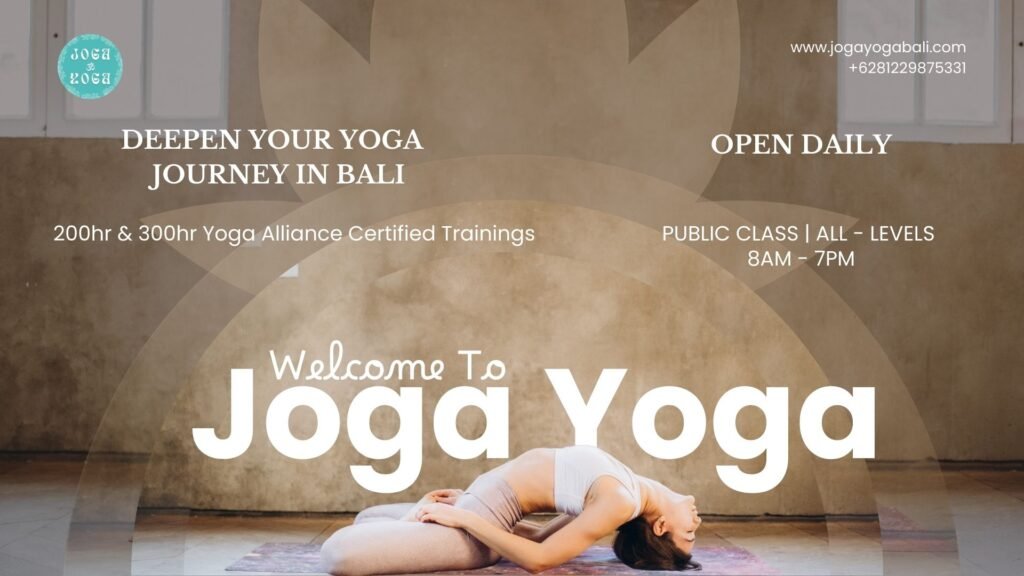
At Joga Yoga, we are proud to be a Yoga Alliance Registered School (RYS) that offers 100-hour, 200-hour, and 300-hour Yoga Teacher Training programs in beautiful Bali.
Here’s what makes our training unique:
Comprehensive Curriculum
Our programs cover all the essentials:
- Asana, Pranayama, and Meditation
- Teaching Methodology and Sequencing
- Yoga Philosophy and Anatomy
- Hands-on Teaching Practice
- Mindfulness and Lifestyle Integration
Personalized Guidance
We keep our class sizes small, so every student receives individual feedback and attention. You’ll teach real classes during training, helping you gain confidence from the start.
Experienced Teachers
Our lead instructors are E-RYT 500 certified with years of global experience. They combine traditional yoga wisdom with modern teaching methods.
Community and Support
You don’t just graduate — you join a lifelong yoga family. Our graduates teach all over the world, and we offer post-training guidance, mentorship, and career advice.
Learn in Paradise
Located in Canggu, Bali, our training center offers the perfect balance of learning and relaxation. Practice yoga under palm trees, eat healthy meals, and connect with like-minded yogis from across the globe.
If you are ready to deepen your practice or start teaching, Joga Yoga’s certified programs can help you grow personally, spiritually, and professionally.
Conclusion: Is Yoga Alliance Certification Right for You?
Yoga Alliance certification is one of the most trusted ways to start your teaching journey. It shows that you’ve trained at a recognized school and understand how to teach yoga safely and effectively.
But certification is just the beginning. What truly makes you a great teacher is your practice, passion, and connection with your students.
If you want a Yoga Alliance-certified program that blends deep knowledge with hands-on practice, Joga Yoga Bali is here to help. Our 100-hour, 200-hour, and 300-hour trainings combine tradition, technique, and transformation — all in the peaceful beauty of Canggu, Bali.
Start your journey with us and become the yoga teacher you were meant to be.
Explore Joga Yoga Teacher Training in Bali →
FAQ: Common Questions About Yoga Alliance Certification
Is Yoga Alliance recognized globally?
Yes. Yoga Alliance is recognized in many countries, including the United States, Canada, Australia, and most of Europe. It is one of the most trusted yoga certification bodies worldwide.
What is the difference between Yoga Alliance and RYT?
Yoga Alliance is the organization that sets standards and approves schools.
RYT (Registered Yoga Teacher) is the title you get once you complete a Yoga Alliance-approved training and register as a teacher.
How long does it take to register with Yoga Alliance?
Usually about 1–2 weeks after you finish your training. Your school must confirm your graduation before Yoga Alliance can approve your registration.
What is the highest yoga certification?
The highest level is E-RYT 500, which means “Experienced Registered Yoga Teacher, 500 hours.” Teachers at this level can lead teacher trainings and mentor other instructors.
Does YTT expire?
No. Your Yoga Teacher Training certificate never expires. However, your Yoga Alliance registration (RYT) must be renewed every year with continuing education hours.
Can I teach yoga without Yoga Alliance certification?
Yes. Many teachers build successful yoga careers without being registered. However, being Yoga Alliance certified gives you more job opportunities, especially in studios and international retreats.
Resources
200 vs 300 Hour Yoga Teacher Training
Best Yoga Teacher Training in Bali
